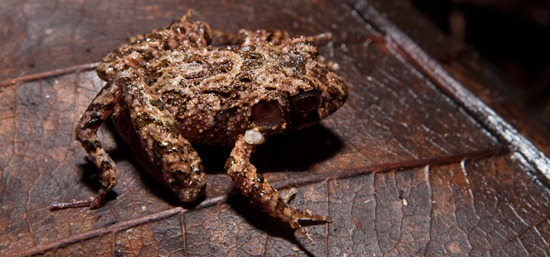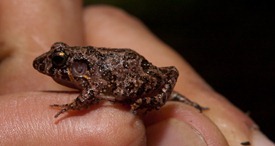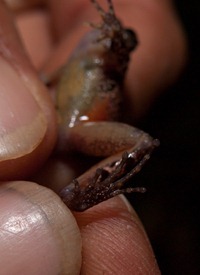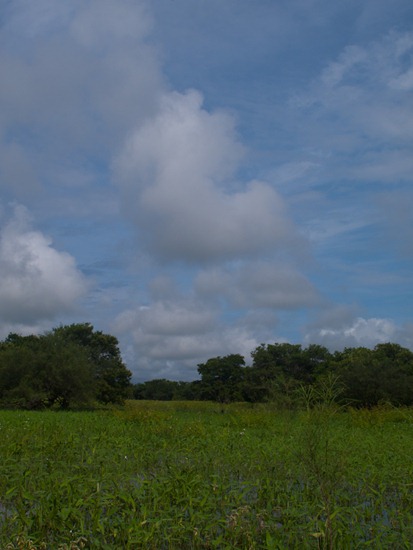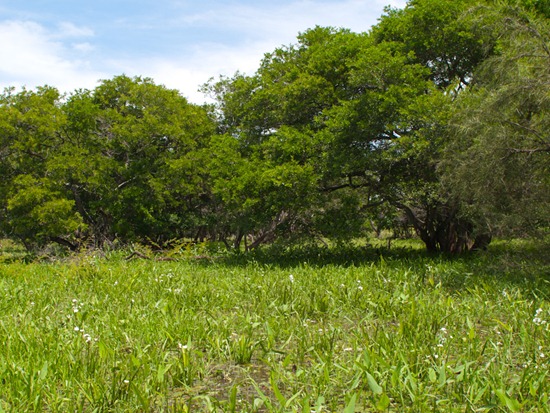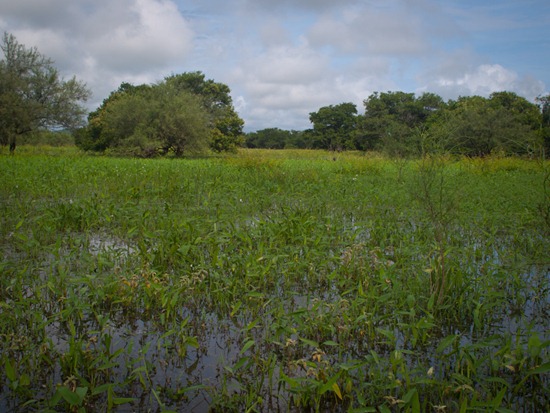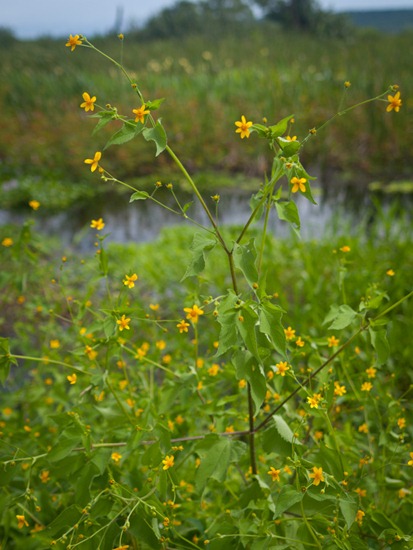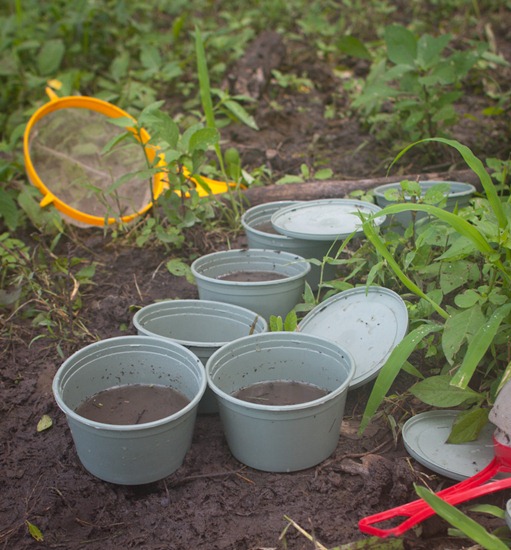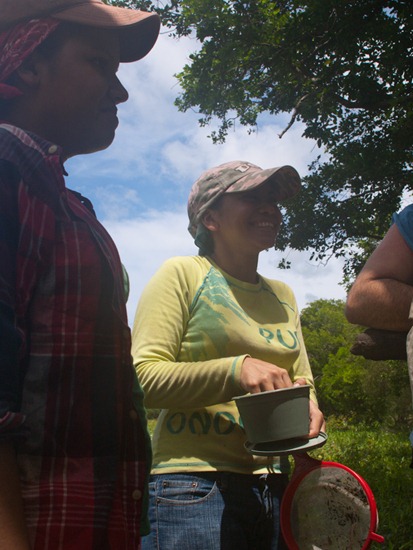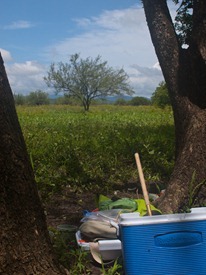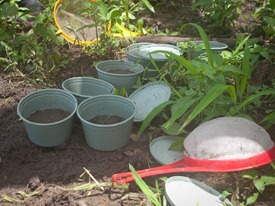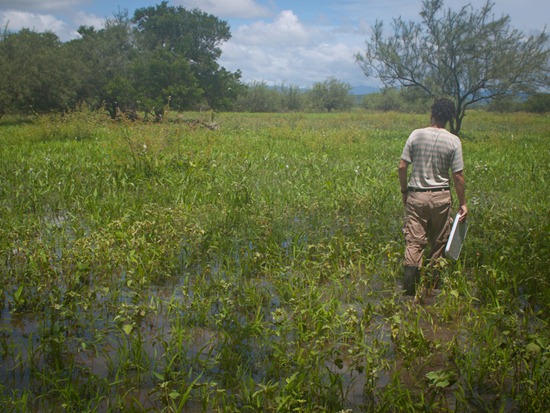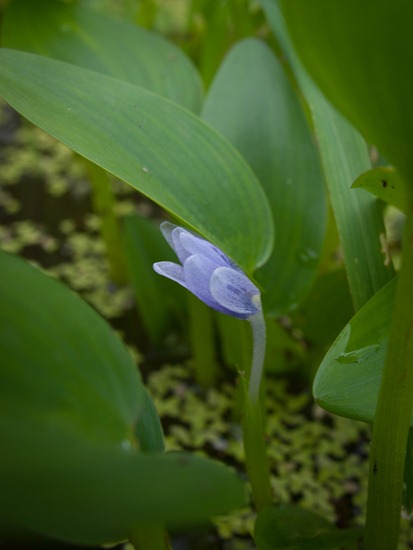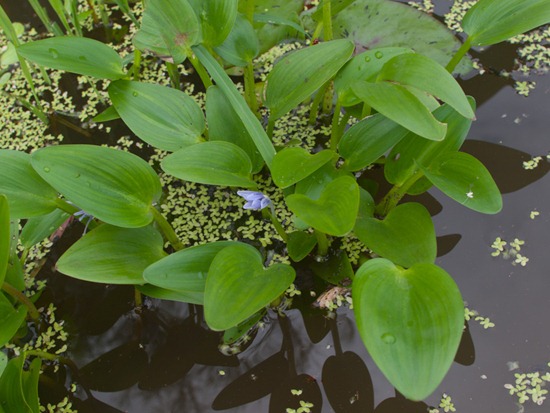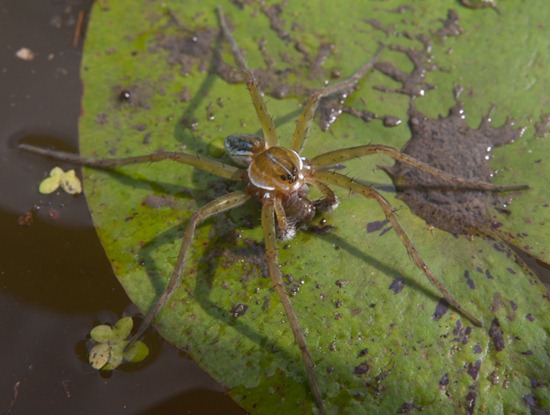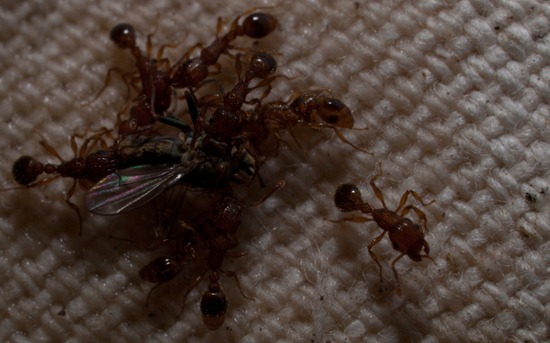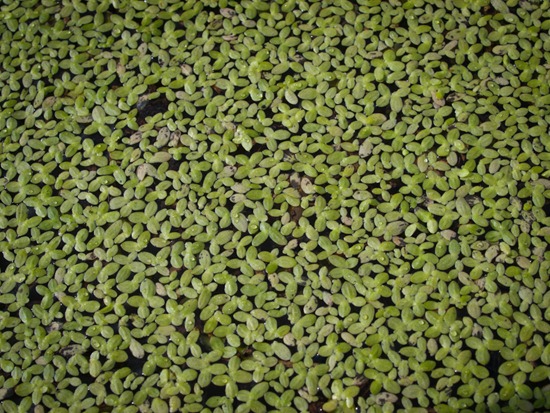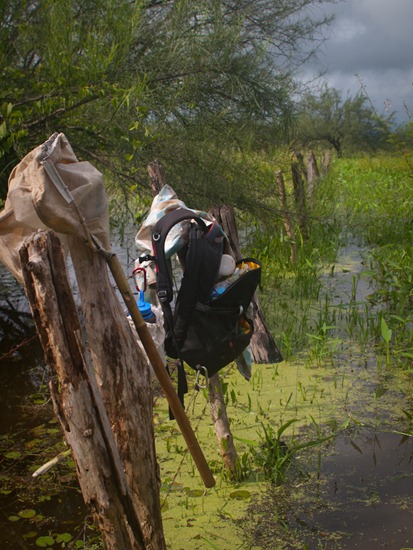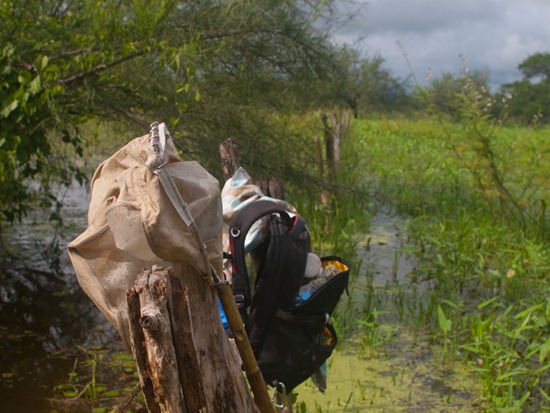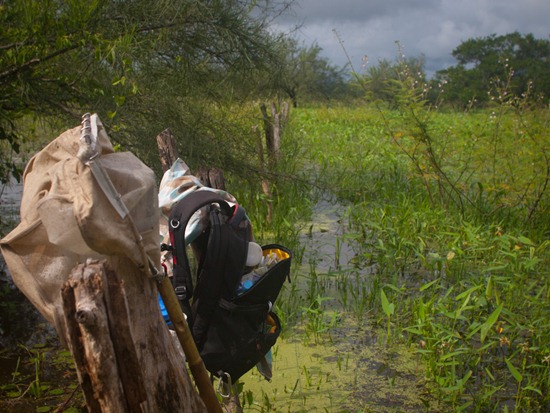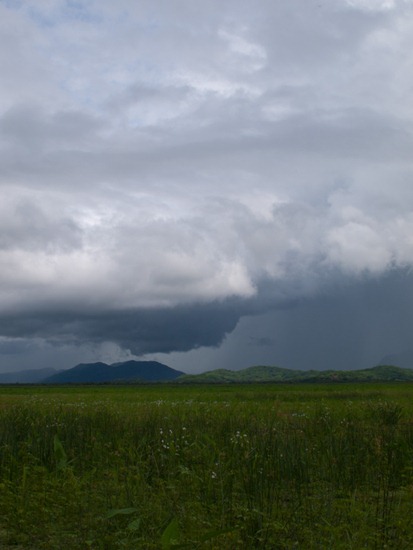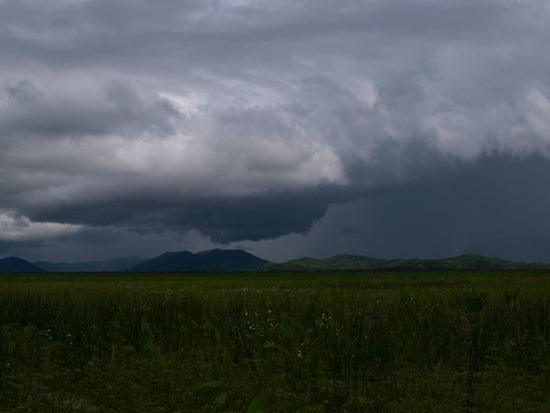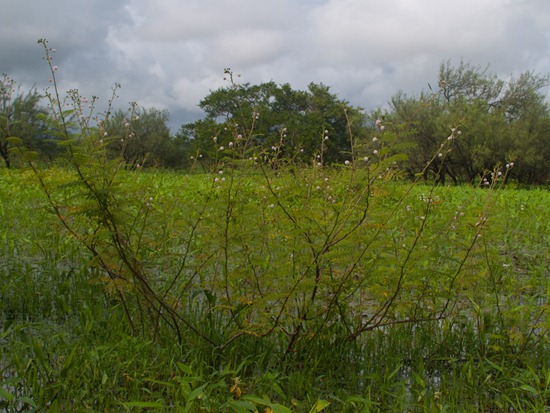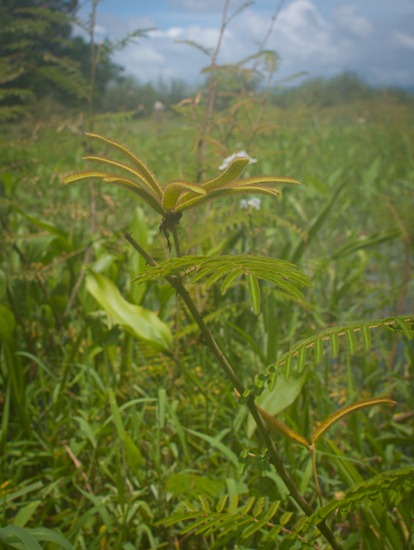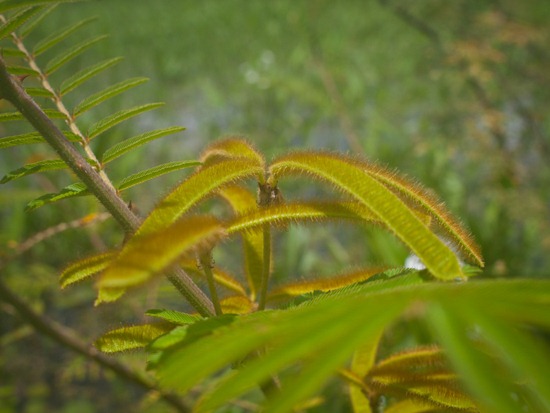Using Savage’s (2004) key and photographs, my best guess for this little herp is Craugastor polyptychus. The former Eleutherodactylus group is exceptionally diversity and difficult to key… especially when the specimen in question was caught 2500 miles away a month ago and not retained, but merely photographed. Whatever it is, I’m sure it’s new for me, which makes my lack of a confident identification that much more frustrating.
Tag Archives: Costa Rica
Lazaro Wetland
Baltimora recta
Tadpole Collection
In June, Mahmood recruited his assistants to help me collect tadpoles. We collected several hundred of about three species, most of which were Leptodactylus spp. Both Arellys and Gabi, pictured below, seemed happy to be out of the lab and in an area not completely saturated with mosquitoes. In the last photo, Rubén walks into the wetland to collect some invertebrate samples for his own work. This area is also pictured here three months later.
Another hyacinth
There are at least 4 species of Pontederiaceae in the Tempisque River basin. Here is one: Heteranthera limosa, a small, emergent plant inhabiting well lit, recently flooded, shallow areas of wetlands. The entire plant is relatively delicate, perhaps as a result of fast growth. Unfortunately, I didn’t catch any with flowers open – it may occur during a certain time of the day, because I did see this open earlier in the morning.
Fly predation
| The flies that are commonly seen on Echinodorus flowers are attracted to white objects and, perhaps, vegetation that’s been stirred up (well, the Syrphids certainly are – their increased abundance makes their buzz is loud in area’s I had recently walked through and disturbed within the wetland). Consequently, the flies are attracted to various white objects I’m carrying, and, occasionally one gets knocked down or otherwise temporarily incapacitated. The brief incapacitation resulted in two predation events picture here, both within less than 5 minutes.
A group of ants and a large, surface dwelling spider prey upon flies. |
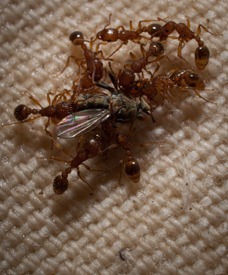 |

